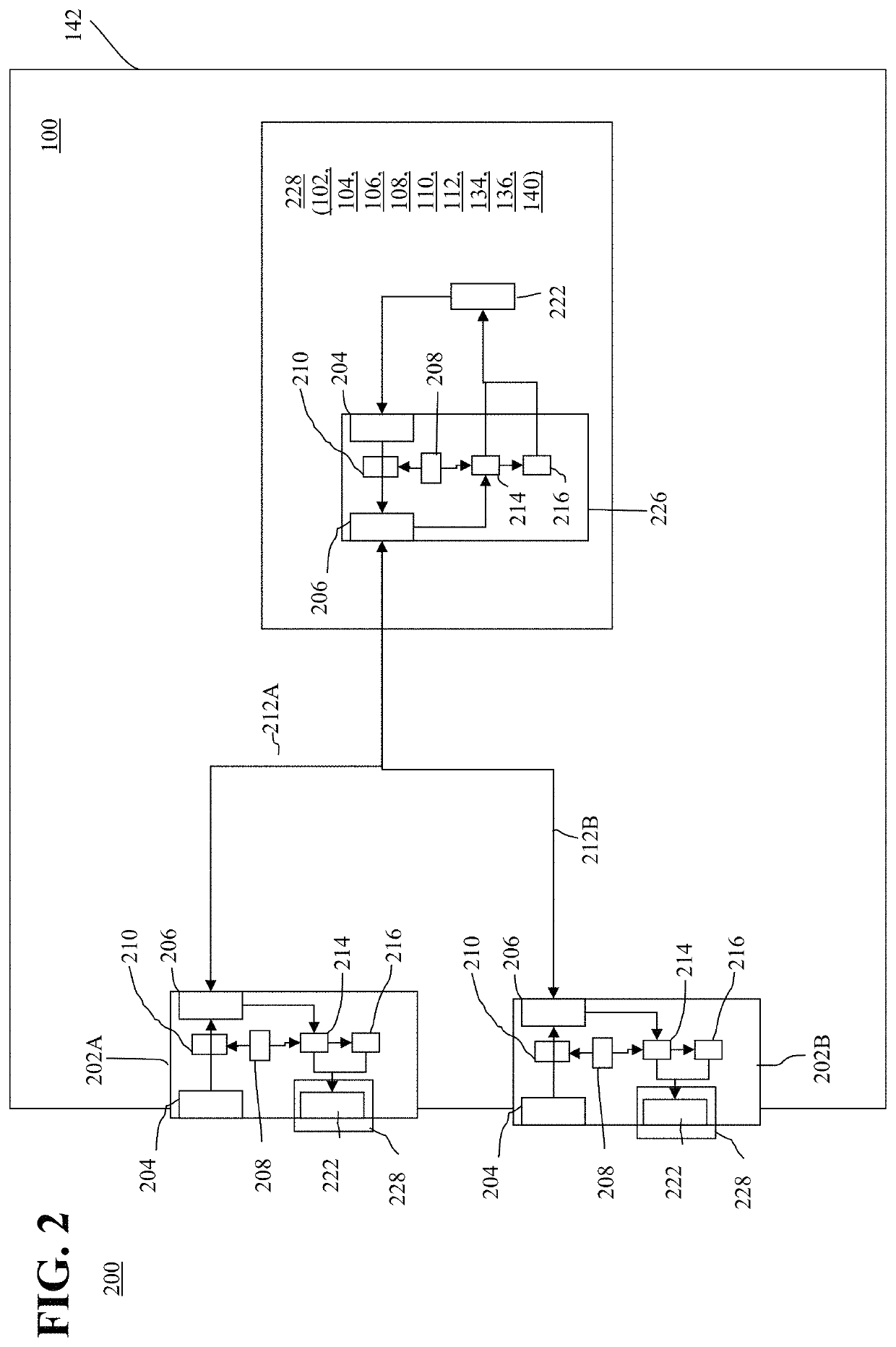Electronic trading systems which implement markets which are overtly or covertly inefficient, unfair or inequitable risk not only losing the trust, along with the patronage, of market participants, but also increased regulatory scrutiny as well as potential criminal and / or civil liability.
Routing differences, however, can vary as, for example, congestion or routing of packets constantly change.
It will be appreciated that additional conditions may be specified, such as a time or price limit, which may cause the order to be dropped or otherwise canceled and that such an event may result in another non-market-impacting communication instead.
The disclosed embodiments represent a technical solution to a technical problem of communications latency in an electronic communications network where multiple network paths are available to a common destination and that variances in the communications latencies between those paths may create issues for deterministic systems which must process transactions from different sources in a particular order, in order of
receipt by the system, and where the results thereof should be received by multiple recipients substantially simultaneously.
The
receipt of these messages / packets out of order may cause issues for deterministic
processing systems if those messages were to be processed out of order.
Dynamic differences include: network load where increased network traffic / congestion may increase latency; interference such as
radio frequency interference, sunspots, etc. which may cause errors and retries in the transmission; equipment / media degradation or mechanical issues such as temperature / environmental sensitivity, poor connections or degraded components which may impart
transmission errors or intermittent or varying changes in impedance, capacitive and / or resistive
delay, etc.
Generally, dynamic latency differences vary over time and may or may not be predictable.
While some dynamic latency issues may be mitigated using static changes, such as replacing interference-susceptible components with shielded components, implementing proper maintenance and upkeep, etc., it will be appreciated that given the nature of dynamic latencies, such latencies cannot be completely addressed in this manner.
However, if a transaction message is delayed in transit from the ingress point to the
processing component such that the processing component first received a later forwarded transaction message which arrived more quickly, the
transaction processing component may not be aware that earlier forwarded message, which is still in transit, exists and it may then proceed to process the later forwarded message first.
They cannot trade with other customers, and importantly, they cannot make markets themselves.
This gives the trader (customer) control over the price at which the trade is executed; however, the order may never be executed (“filled”).
It will be appreciated that such deterministic processing may, in fact, result in out of
order processing depending on the business rules, such as where conditions for processing orders are imposed which may not be met by an earlier transaction before a later transaction.
It will be appreciated that identifying and defining the boundaries of an inter-networked
communications system, the internal components thereof being interconnected as well, such as between the
electronic trading system 100 and market participants and the infrastructure which allows communications there between, may be complex.
Logically, the paths, and the boundaries there between, over which transactions flow and the boundaries between entities may be more difficult to discern.
Thereafter, variation in network path latencies, etc. may impart unequal delays on the delivery of those messages.
To improve performance and volume, merely implementing existing systems using newer and faster general-purpose technology may be insufficient.
As such, these optimizations are not necessarily optimized for any one application, e.g. such as for implementing a match engine of an
electronic trading system.
However, such optimizations may, in fact, undermine the application for which the general-purpose processor is being used.
In particular, with respect to the
business transactions processed by an electronic trading system, where transactional
determinism is paramount, underlying optimizations may be disruptive thereof.
However, merely increasing operating performance, whether via an improved
general purpose processor or via an FPGA based implementation, may
expose, or reduce tolerance of, fundamental flaws of traditional
computer hardware, operating systems or the algorithms / programs implemented thereon, as well as network interconnects /
communications media.
Such flaws, which may result in non-deterministic operation, include manufacturing imperfections / variabilities (
clock skew, long paths, Resistance /
Capacitance (“RC”)
delay, alpha particles, etc.), susceptibility to environmental conditions or changes thereto (temperature,
humidity, solar flares, etc.), and
human error (intermittent or loose connections, improper configuration, etc.).
These flaws may introduce transient errors, such as race conditions, bit errors or
packet loss, which affect deterministic operation.
Furthermore, mere improvements to performance can reveal problems with the applications themselves, such as trading applications or their underlying algorithms.
Further, the occurrence of unaccounted for, or intentionally ignored, assumed-statistically-insignificant events / factors, variables,
rounding errors, corner cases, rare or unexpected / unanticipated states or state transitions may present an
increasing risk.
Generally, speed becomes a lens which creates, or magnifies / reveals underlying, defects and / or divergences, e.g. where a later transaction may overtake an earlier transaction (
race condition), as well as limits
recovery time from, or otherwise reduces tolerance for, errors (transient or systemic (
delay) such as bit errors,
packet loss, etc.).
Such flaws may cause inconsistencies and / or may be unfairly exploited.
However, for many of the reasons described above,
parallel communication paths complicate deterministic behavior, e.g. by creating opportunity, such a via asymmetric latencies / delays among communications paths, for later transmitted or arriving transactions to overtake earlier arriving or transmitted transactions and for inequities in the
receipt of messages, and may require mechanisms to discriminate among closely received transactions and arbitrate among simultaneously, or substantially simultaneously, received transactions, e.g. transactions received at the same time or received within a threshold of time unresolvable by the system.
Additionally, the illustrations are merely representational and may not be drawn to scale.
 Login to View More
Login to View More  Login to View More
Login to View More 


